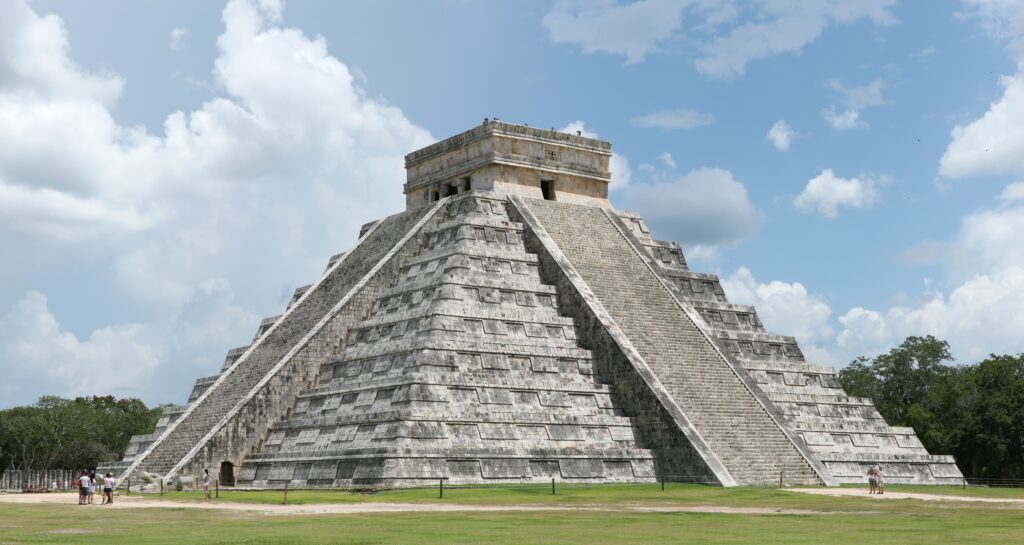Chichen Itza, located on the Yucatan Peninsula in Mexico, is a pre-Columbian archaeological site that represents one of the most significant and well-preserved examples of ancient Maya civilization. The site’s name translates to “at the mouth of the well of Itza,” and it holds deep cultural and historical significance, making it a UNESCO World Heritage Site and one of the New Seven Wonders of the World.

Chichen Itza’s origins can be traced back to around 600 AD when it was first settled by the Maya. However, the site underwent significant development and expansion during the Late Classic period, between 800 and 1000 AD. The city served as a major center for political, religious, and economic activities, and its influence extended throughout the Yucatan region and beyond.
The architecture of Chichen Itza is a blend of Maya and Toltec styles, indicating interaction and cultural exchange between these ancient civilizations. The site showcases a variety of structures, including pyramids, temples, ballcourts, and an observatory. Among the most iconic and awe-inspiring structures is the Kukulkan Pyramid, also known as El Castillo. This impressive pyramid stands about 79 feet (24 meters) tall and features a series of terraces adorned with intricate carvings and sculptures.
One of the most fascinating aspects of Chichen Itza is its astronomical precision. The architecture and layout of the city are designed in alignment with astronomical events, particularly the equinoxes. During these times, shadows cast on the pyramid create the illusion of a serpent slithering down the stairs, a phenomenon that draws thousands of visitors each year.
The site also houses the Temple of Warriors, an expansive plaza with a large stepped pyramid surrounded by numerous columns. The Great Ballcourt, the largest and most well-preserved ballcourt in Mesoamerica, is another remarkable feature at Chichen Itza. This ballcourt served as a venue for the Mesoamerican ballgame, a significant ritual with symbolic and religious significance.
In addition to its architectural grandeur, Chichen Itza is rich in art and artifacts that offer valuable insights into Maya culture and mythology. Intricate carvings, murals, and statues provide glimpses into the religious beliefs, rituals, and customs of the ancient Maya civilization.
The decline of Chichen Itza remains a subject of debate among scholars. By the time the Spanish conquistadors arrived in the region during the 16th century, the city was largely abandoned. It is believed that a combination of factors, including resource depletion, political unrest, and environmental challenges, contributed to the decline of the once-thriving city.
In modern times, Chichen Itza continues to be a focal point of archaeological research and tourism. The site’s accessibility, combined with its remarkable state of preservation, attracts visitors from all over the world who come to marvel at its historical significance and architectural marvels.
The Mexican government and various organizations have made efforts to protect and preserve Chichen Itza’s cultural heritage. Conservation projects and ongoing research help ensure that this ancient city remains accessible to future generations while safeguarding its historical and cultural value.
As a UNESCO World Heritage Site and one of the New Seven Wonders of the World, Chichen Itza stands as a testament to the ingenuity and accomplishments of the ancient Maya civilization. Its architectural brilliance, astronomical precision, and rich cultural significance continue to captivate the world, inviting visitors to immerse themselves in the mysteries of this extraordinary archaeological site. Chichen Itza’s enduring legacy as a center of Mayan civilization ensures that its allure will endure for generations to come, preserving the fascination and wonder of this ancient wonder in the heart of Mexico’s Yucatan Peninsula.
